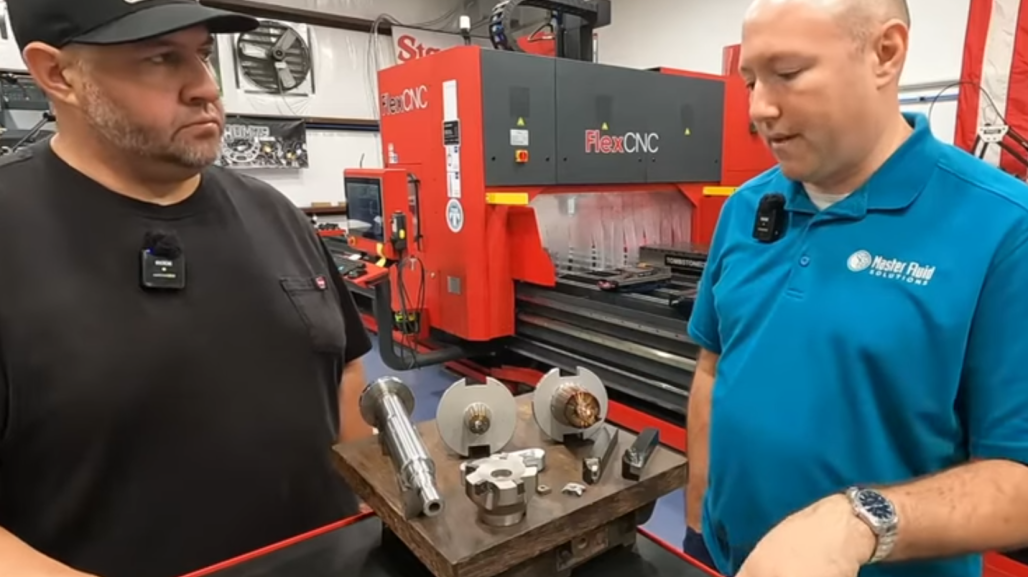Metalworking fluids (MWFs), including coolants, lubricants, corrosion inhibitors, and cleaners, are used in machining and grinding operations to remove chips from the cutting zone, improve surface finishes, and promote or improve tool life. Choosing the right metalworking fluid can double tool life and improve the performance of metalworking machines by:
Reducing friction between the metal and cutting tool
Cooling the workpiece and cutting or forming tools
Protecting machinery and workpiece from corrosion
Improving productivity with higher speeds and feeds
Reducing machine wear and downtime
Investing in a high-quality metalworking fluid is highly beneficial to many aspects of your company, including parts quality, health and safety, and the bottom line. Though metalworking fluids are an integral part of the machining process, some manufacturers chose an inexpensive MWF to save money on a line item. This is, in fact, a false economy. As the cost of MWF is a factor that ranges from 0.03% to less than 1% of a manufacturing facility's budget, finding the right MWF actually lowers other costs because it impacts everything in production, from machines to parts to operators. The following sections outline a part’s journey through the shop, from the moment it enters as a raw material, to the moment it reaches your customer. Metalworking fluids are there to enhance the process every step of the way.
A Part's Journey
Metal Arrives in Plant
All types of metal are machined and worked in plants across various industries, from expensive alloys in the aerospace and automotive industries to the stainless steel used in the medical industry. Each metal has different requirements when it comes to metalworking fluids which can often be a little confusing. Master Fluid Solutions is here to help you find the right fluids for your specific metal.
Types of Metal
The main metal groups including steels, stainless steels, cast irons, nonferrous metals, superalloys, and hardened steels are represented by their ISO group letter and color, indicating that the metal you are using is certified by the International Organization for Standardization (ISO) and, therefore, of high quality and standard.
Metal is Shaped into a Part
When it’s time to cut or form the metal into a part, two factors are considered — the type of metal being machined and the operation being performed. Knowing this information helps in choosing the best coolant for your CNC machine, whether it be a synthetic, semisynthetic, microemulsion, emulsion, straight oil, or neo-synthetic.
Metalworking Operations
To create the final product, many different metalworking processes may take place to get your part functional and to a high-quality finish. These operations create the part, mostly through machining, grinding, and forming.
A coolant with more lubricity is preferable in specific operations, such as low-speed activities like broaching or using a large-diameter tap. Conversely, a coolant offering enhanced cooling properties is more suitable for the high-speed turning of hardened steel parts. Since coolant interacts with every cutting tool, finding the best CNC coolant for your shop is vital. Watch the video below to find out more about choosing the right metalworking fluid for your specific operation.
Continue reading this article in its entirety here.
This article was previously featured on Master Fluid Solutions blog.








